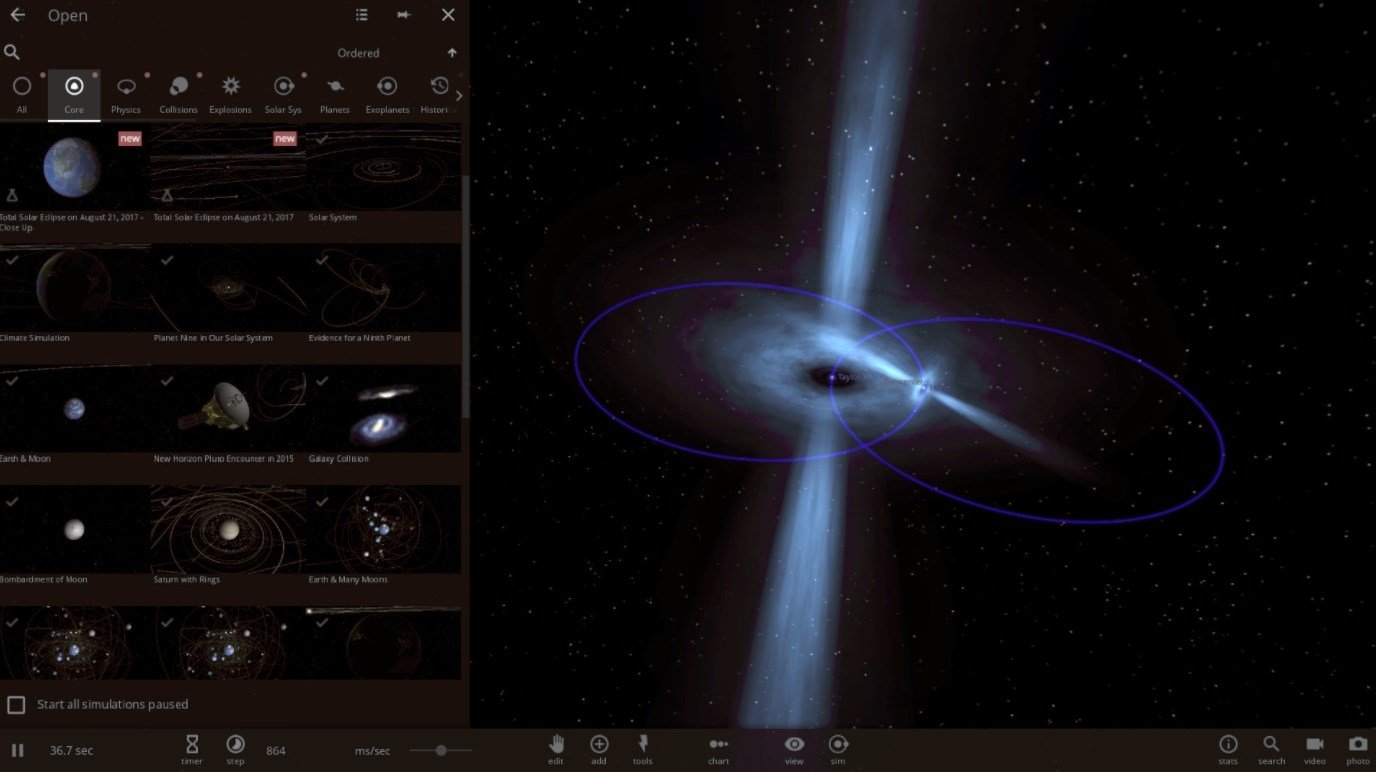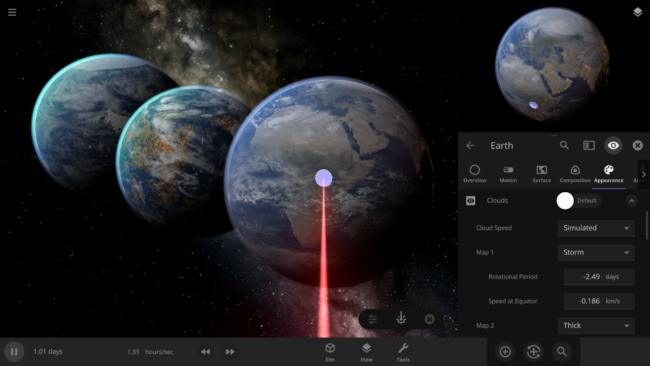

- #UNIVERSE SANDBOX VS UNIVERSE SANDBOX 2 FULL#
- #UNIVERSE SANDBOX VS UNIVERSE SANDBOX 2 SIMULATOR#
- #UNIVERSE SANDBOX VS UNIVERSE SANDBOX 2 FREE#
#UNIVERSE SANDBOX VS UNIVERSE SANDBOX 2 FULL#
Full sky panoramic view of the Milky Way.Easily create 2D or 3D particle grids and then warp them with Jupiter- sized planets.Generate rings around bodies with a single click.Includes scale ring systems of Saturn, Jupiter, Uranus, and Neptune.Rings are simulated as hundreds of particles and are effected by gravity.Combine: A more realistic mode where bodies combine into a single body when they collide.Bounce: A fun, fictional mode where bodies bounce off of each other like big rubber balls.Multiple color modes to visualize speeds and accelerations.Editable simulation files let you create an unlimited number of scenarios.Includes 10 step-by-step activities that explain the various controls.Complete introduction and included tutorial.3D Mode for use with red & cyan glasses ( anaglyph stereoscopic).Everything is measured in real units: kilograms, meters, seconds.Full-featured interactive n-body gravity simulator.Asteroid Apophis passing near Earth in 2029.

#UNIVERSE SANDBOX VS UNIVERSE SANDBOX 2 FREE#
Universe Sandbox is free to use forever for viewing and exploring simulations.

The free version of Universe Sandbox lets you explore and discover any of the included simulations for as long as you want. What's the difference between the free and premium versions? Purchase the Early Access version and read more.Ĭheck out the video preview, user videos, or view screenshots of the program in action. Universe Sandbox ² is a complete rewrite of the original and has been in development since fall 2011.
#UNIVERSE SANDBOX VS UNIVERSE SANDBOX 2 SIMULATOR#
The developers seem interested in incorporating some GR concepts, like gravity propagating at the speed of light, spinning black holes and ways to better approximate GR.At its core, Universe Sandbox is a gravity simulator (that very intentionally happens to be fun and easy to use).Ĭheck out the "what is it?" page for more info. Still, Newtonian physics can get the job done for the most part. Accurate general relativity simulations require supercomputers. They would start with some initial data of the shape of spacetime and then see how it evolves according to the Einstein equations, which are 10 highly non-linear partial differential equations. Instead of simulating N number of bodies, they would be simulating a huge number of points. That is, taking your simulation space, discretizing it to a hi-res 3-D grid and checking the effect that each and every point in that grid has on all neighboring points at every timestep. General relativity requires simulating the spacetime itself. Newtonian physics just requires n-body mechanics, so it is much easier to implement.

However, Universe Sandbox 2 uses 300-year old Newtonian physics, rather than general relativity. If you want to simulate day-long events, like planets crashing, it might be better. Means that if you want to simulate the Solar System over a long period of time, it won't be very accurate. The slower the time, the more accurate the calculations. Its accuracy degrades as you increase the flow of time. Not sure if these kinds of questions are allowed here, but I may as well answer it.


 0 kommentar(er)
0 kommentar(er)
